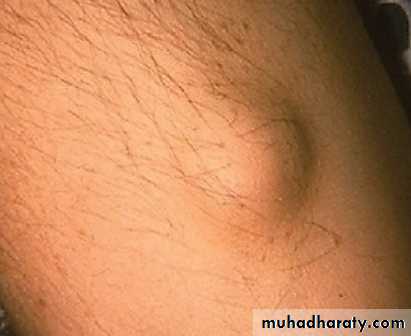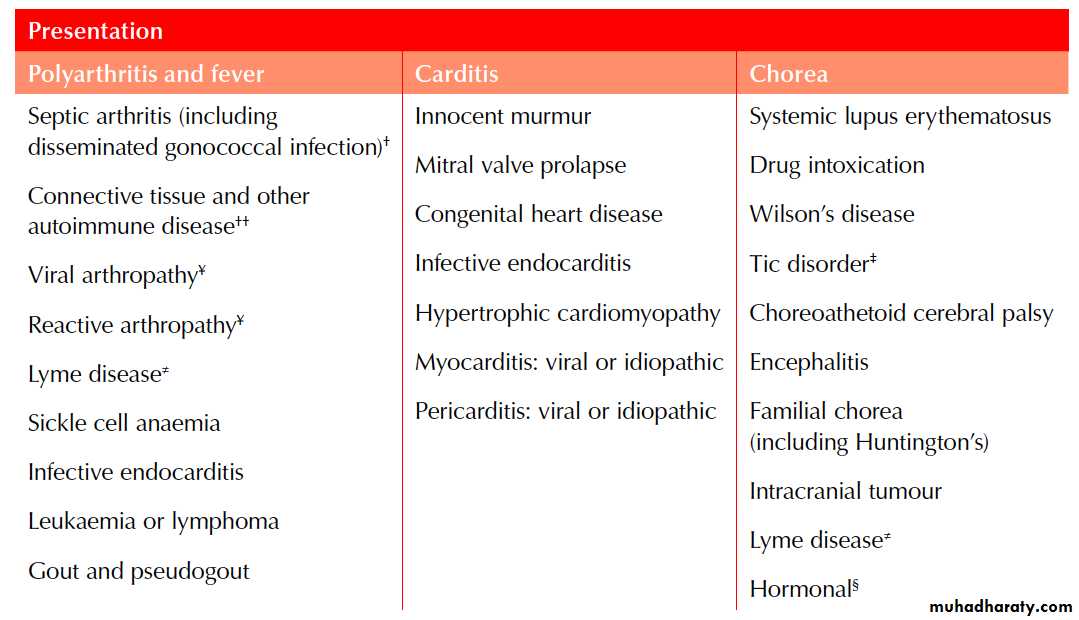Diagnosis of ARF in children
ARF: some basics• 3-6% of any population susceptible
• Incidence and prevalence in females >males
• ARF/RHD can run in families
• Specific genetic markers have been identified
• There is no racial predisposition
November 2012
2
Risk factors
• Established clear link with poverty• household overcrowding
• poor sanitation
• housing quality and appropriateness
• educational disadvantage
• Limited access to health services
• variability of health infrastructure and follow up
• Geographically remote
November 2012
3
GAS pharyngitis
ArthritisCarditis
Chorea
Fever
Exaggerated immune responseAcute rheumatic fever – ARF
November 20124
ARF recurs - often many times
Valve damage is cumulative and silentRheumatic heart disease (RHD)
Cardiac failure, early death
*
November 2012
ARF progression
5
Diagnosis and GAS
• Definite initial or recurrent ARF diagnosis requires:
• 2 major plus evidence GAS infection
• 1 major plus 2 minor plus evidence of GAS infection
• Throat swab
• ASOT
• Anti DNAse B
• No other probable diagnosis
November 2012
6Major manifestations
November 20127
Major manifestations
High risk groupsPolyarthritis or aseptic mono-arthritis or polyarthralgia
Carditis (including subclinical evidence of rheumatic valvulitis on echocardiogram)
Chorea
Erythema marginatum
Subcutaneous nodules
Low Risk groups
Polyarthritis
Carditis
Erythema marginatum
Subcutaneous nodules
Chorea
November 2012
8
• Monoarthritis present in 17% of ARF presentations
• Migratory asymmetric polyarthritis
• Affects peripheral large joints
• Often intense pain – will not tolerate passive movement
• Limited duration: 2 days to 3 weeks
• Dramatic response to salicylates
• rapid response assists diagnosis
Arthritis
November 2012
9Can a monarthritis be ARF?
• In high risk populations:• aseptic monoarthritis can be a major manifestation
• monoarthritis often associated with carditis
• if joint aspirate sterile, prior to treatment for septic arthritis, investigate for ARF
November 2012
10
Polyarthralgia
• A major criteria ONLY in high risk populations:
• Multiple painful joints
• Can be migratory
• Unlike arthritis lacks:
• Effusions
• Heat
• Morning stiffness
November 2012
11
Carditis
• Can involve all layers of the heart• Pericardium – can cause effusions
• Myocardium – affects heart function and conduction
• Endocardium – the classic valve lesions
• MR then AR most common lesions
• Right sided valves rarely involved
• Stenosis is a late finding
November 2012
12
Carditis: investigations
• Early echocardiography essential• repeated at 2 to 6 weeks
• Chest x-ray
• Electrocardiogram
•
November 2012
13Carditis: treatment
• Often requires inpatient bed rest and care if :• moderate/severe carditis suspected by clinical findings
Consider steroids for severe carditis
If signs of heart failure or cardiomegaly
• consider diuretics and ACE inhibitors
November 2012
14
Sydenham’s chorea
• Rapid, uncoordinated jerking movements
• Primarily the face, feet and hands• Female to male ratio of 2:1
• Occurs up to 6 months after acute infection
• Mostly children, 5 to 13 years
• “Milkmaids” sign
• Tongue fasciculations
• Emotional lability
November 2012
15
Erythema marginatum
• Rare finding• reported in less than 2% Australian Aboriginals
• difficult to see on dark skin
• Presence of rash diagnostic of ARF
• Pale center and darker margins
• Blanch under pressure
• Circular snake like pattern
• Occurs on trunk and extremities
• Not itchy or painful
November 2012
16
Subcutaneous nodules
• Rare, only seen in 2% cases• Highly specific of ARF
• Strongly associated with carditis
• Round firm and freely mobile
• 0.5 to 2.0 cm in diameter
• Appear 1 to 2 weeks after symptom onset
• Occur in crops of up to 12
• over elbows knees, wrists, ankles, achilles tendons, occiput, and posterior spinal processes
November 2012
17Minor manifestations
High risk groupsMonoarthralgia
Fever
ESR≥30 mm/h or CRP ≥30 mg/L
ECG changes
Low Risk groups
Fever
ESR≥30 mm/h or CRP ≥30 mg/L
ECG changes
Polyarthralgia or aseptic monoarthritis
November 2012
18
Fever
• Temperature greater than 38C
• In the absence of fever documentation
• reliable history if anti-inflammatory therapy given
• already given
November 2012
19
ESR & CRP
• Repeat serology 10 to 14 days if not confirmatory• To satisfy minor criteria:
• serum CRP ≥30mg/L
• ESR ≥30mm/hr
• Elevated WBC insensitive marker for ARF
November 2012
20ECG
• If ARF suspected always ECG
• Check P-R interval
• Normal 0.16 sec if 3 to 12 years old
• If prolonged
• repeat ECG in 1 to 2 months
• If P-R interval returns to normal:
• ARF more likely
November 2012
21Diagnosis: key investigations
November 201222
Differential diagnosis
November 2012
23ARF diagnosis and management
• First requires diagnosis then secondary prophylaxis• Inpatient assessment recommended
• Specialist review for ongoing management
• Bed rest
• NSAIDs
• Initial then follow up echocardiography
• Chest x-ray
• If heart failure: ACE inhibitors, diuretics
• Consider steroids for carditis
November 2012
24
Take home messages
• Incidence in Aboriginal Australians and Torres Strait Islander people amongst the highest in the world• Predominantly affects children aged 5 to 15
• Largely affects disadvantaged populations
• High index of suspicion in high risk populations
• Diagnosis needs clinical criteria and investigation results
• Diagnosis often requires hospital admission
November 2012
25














